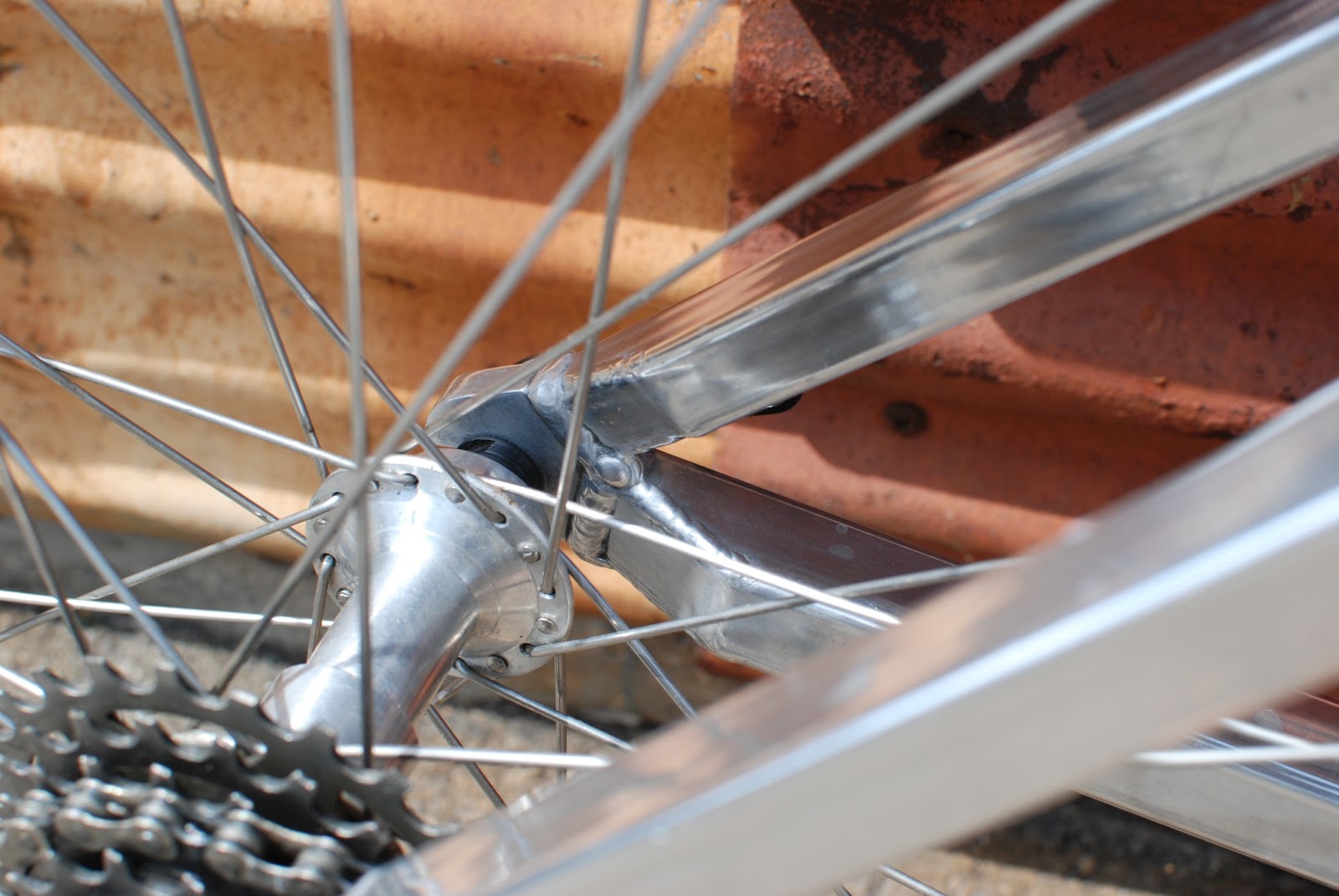Now, I took the bike to the Klein factory, talked to the painters (Dale, Kory and others) and nobody really had any good insight, or couldn't remember. The frame is not signed which everybody said meant that Dale painted it since they all took so much pride in those paintjobs that they signed them. More than likely this was an early attempt at the Storm paintjob while Dale was developing it. We all know that the final team bikes had clouds starting on the headtube (on mine they start on the top and seat tubes), the the multi color fade starting with black/purple/pink (orange drops on the team bikes). So this bike lacks the clouds on the headtube and the orange on the dropouts. I'm fairly certain that it was either bike meant for a team rider that never got it, or maybe it was just an experiment that never got fully cooked. The other interesting tid bits are a 4th set of water bottle mounts which is rather uncommon for a normal Klein and the Ti brake bosses and BB spindle (something I've mostly seen on race bikes).
Anyways, this is how I got it back then:
Basically frame, MC2 fork, some record OR cranks with a front and rear derailleur. The frame had a few chips on the headtube from some attempts at fork removal and installation, a couple small chips around the dropouts and maybe a few more little nicks here and there. Otherwise it was in great shape. It stayed this way for a long time as I looked for a Strata fork (in hindsight a fool's errand as this bike never would have had a strata, oh well). Along the way I helped to organize a little museum exhibit for Cannondales's homecoming celebration in 2001 and ran into Tinker at the event. He was gracious enough to sign the frame. He didn't have any memory of having a second bike, but for that matter he didn't have much of a memory of any of that stuff. He did end up sending me some unused Mag-21 lowers which are a pretty good (not perfect) match for some of the purple on the frame, so who knows.
It took me another year if not longer until the bike was complete. I found a Strata fork and MC1 and had them painted to <cough-cough> match the frame at CyclART. Along with that they touched up some of the chips and cleared Tink's signature. The rest of the build was a rather uninspiring (by today's standards) M900 XTR I took off of a NOS Specialized Epic Ultimate (which I then sold for OMFG - $300). I did manage to find (can't remember where anymore) a perfectly matching Mag-21 crown and a Klein post with actual Boron fibers inside the tube. That along with the full suite of jerseys, shorts, helmet etc and this is how the bike ended up back then in late 2002/2003.
Not long after that I lost my job and ended up selling off my entire collection of bikes to stay afloat. One of the very last bikes to go was this one. It sold to a friend on mine in Denmark with the promise that if he decided to sell it he'd give me right of first refusal.
Fast forward 10 years. Life got a bit more stable and a couple years ago I renewed my interest in vintage bikes. I've been lucky to find some amazing bikes, but this whole time this bike has been sitting there in the back of my head. Nobody knew where the bike was, the owner was/is not a member of any groups and so the bike has just sat there. After a little bit of research through old email accounts and old friend I was able to track him down and to my surprise he still had the bike. We talked about it and he agreed that he'd sell it back to me at the same price he paid back then. The deal took a little while to ink out but after a couple months this showed up at my house over the weekend:
I gave the bike a quick bath, it was covered in cobwebs (still some on hubs), adhesive tape residue and so on. It looks like it hadn't been ridden in over ten years. Basically the same as the day I built it 10+ years ago. Crazy!!
So, what's next??? Well, I never liked the fork and MC1 and so they'll go. I will actually do the opposite of what everyone wants for their Adroit and remove the Strata and will install the fork I got from Tink and put on a more subtle MC1, either black or maroon/black. I will take a page from Kai's book and build the bike with the same/similar spec that Tinker had back in 93. I've got most of the stuff sitting here and just need to build the wheels and put it together.






















































